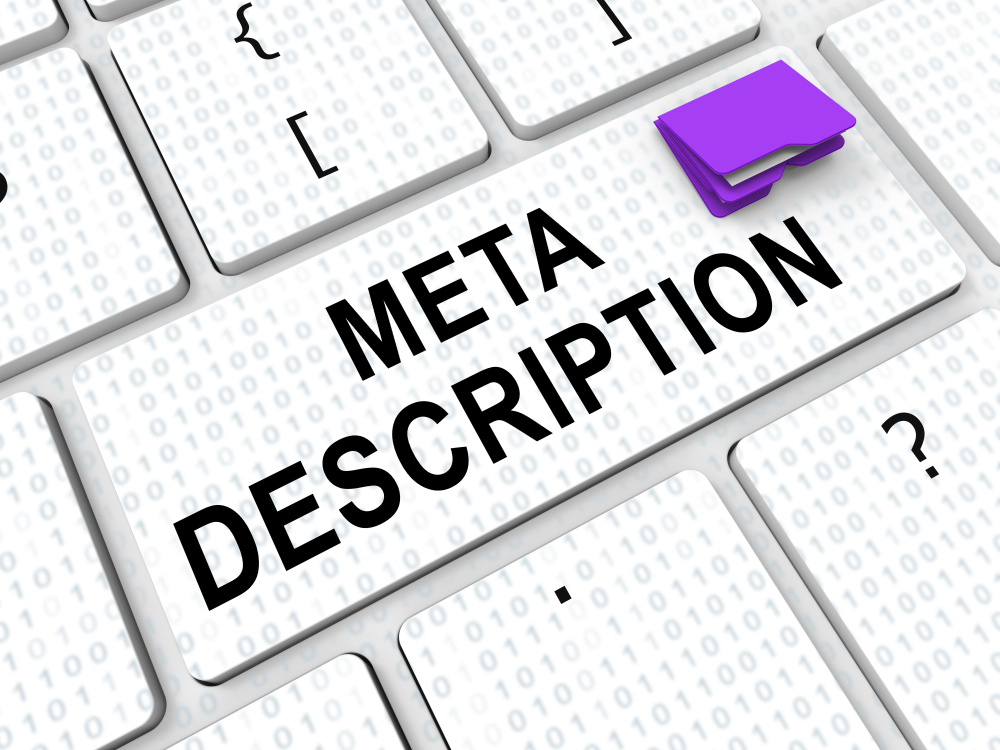In the vast digital landscape, where attention spans are shrinking and competition is fierce, every aspect of your website’s presentation matters. Among the crucial elements that can make or break your online visibility, meta descriptions hold significant importance. A well-crafted meta description can entice users, improve click-through rates, and boost your search engine rankings. In this comprehensive guide, we will delve into the art of creating the right meta description to maximize the effectiveness of your website.
Understanding Meta Descriptions
Before we delve into the strategies for creating an effective meta description, let’s first understand what it is. A meta description is an HTML attribute that provides a concise summary of a webpage’s content. It appears below the page title and URL in search engine results pages (SERPs). A well-written meta description not only informs users about the page’s content but also entices them to click on the link.
Importance of Meta Descriptions for SEO
Meta descriptions play a crucial role in search engine optimization (SEO) for several reasons:
- Improved Click-Through Rates (CTRs): A compelling meta description can significantly influence CTRs by enticing users to click on your link instead of others. By using persuasive language and relevant keywords, you can stand out in the search results and attract more organic traffic.
- User Experience: A well-crafted meta description provides users with a clear idea of what to expect on your webpage. This helps in managing user expectations, reducing bounce rates, and improving overall user experience.
- Search Engine Rankings: Higher click-through rates resulting from engaging meta descriptions can send positive signals to search engines, potentially boosting your rankings.
Tips for Crafting the Perfect Meta Description
- Keep it Concise: Meta descriptions should be brief and to the point. Aim for a maximum of 155-160 characters to ensure that your description appears in full on SERPs.
- Include Relevant Keywords: While keyword density is no longer a crucial factor for search engine rankings, incorporating relevant keywords in your meta description can help search engines understand the page’s context. Use your primary keyword naturally within the description.
- Understand User Intent: Put yourself in the shoes of your target audience. Consider their pain points and desires. Craft a meta description that resonates with their needs and clearly communicates the value they will receive by clicking on your link.
- Unique and Compelling: Make sure each meta description across your website is unique and tailored to the specific content on that page. Use persuasive language to entice users to click through. Highlight the unique selling points and benefits of your content.
- Match Meta Description with Content: Ensure that your meta description accurately reflects the content on your webpage. Misleading or irrelevant descriptions can lead to higher bounce rates and a negative user experience.
- Call-to-Action: Incorporate a strong call-to-action within your meta description to encourage users to take the desired action. Use action verbs and phrases like “Discover,” “Learn,” “Unlock,” or “Find out more.”
- Don’t Overstuff with Keywords: While incorporating keywords is essential, avoid stuffing your meta description with too many keywords. This can make it appear spammy and reduce its overall effectiveness.
- Utilize Rich Snippets: Take advantage of structured data and rich snippets to provide additional information in your meta description, such as star ratings, reviews, or pricing details. These additional elements can make your listing more appealing and increase click-through rates.
Analyzing and Testing
Creating the perfect meta description is an ongoing process. Continuously analyze the performance of your meta descriptions using tools like Google Analytics and Search Console. Monitor the click-through rates and make data-driven adjustments to optimize your descriptions further. A/B testing can also help you identify the most effective meta descriptions for different pages.
Final Words
Creating an effective meta description is an art that requires a deep understanding of your target audience, the value your content providers, and the intricacies of search engine optimization. By following the tips outlined in this guide, you can create compelling meta descriptions that entice users, improve click-through rates, and boost your website’s visibility. Remember, a well-optimized meta description is not only crucial for SEO but also contributes to enhancing the overall user experience. Invest time and effort into perfecting your meta descriptions, and you will reap the rewards in the form of increased organic traffic and improved search engine rankings.





